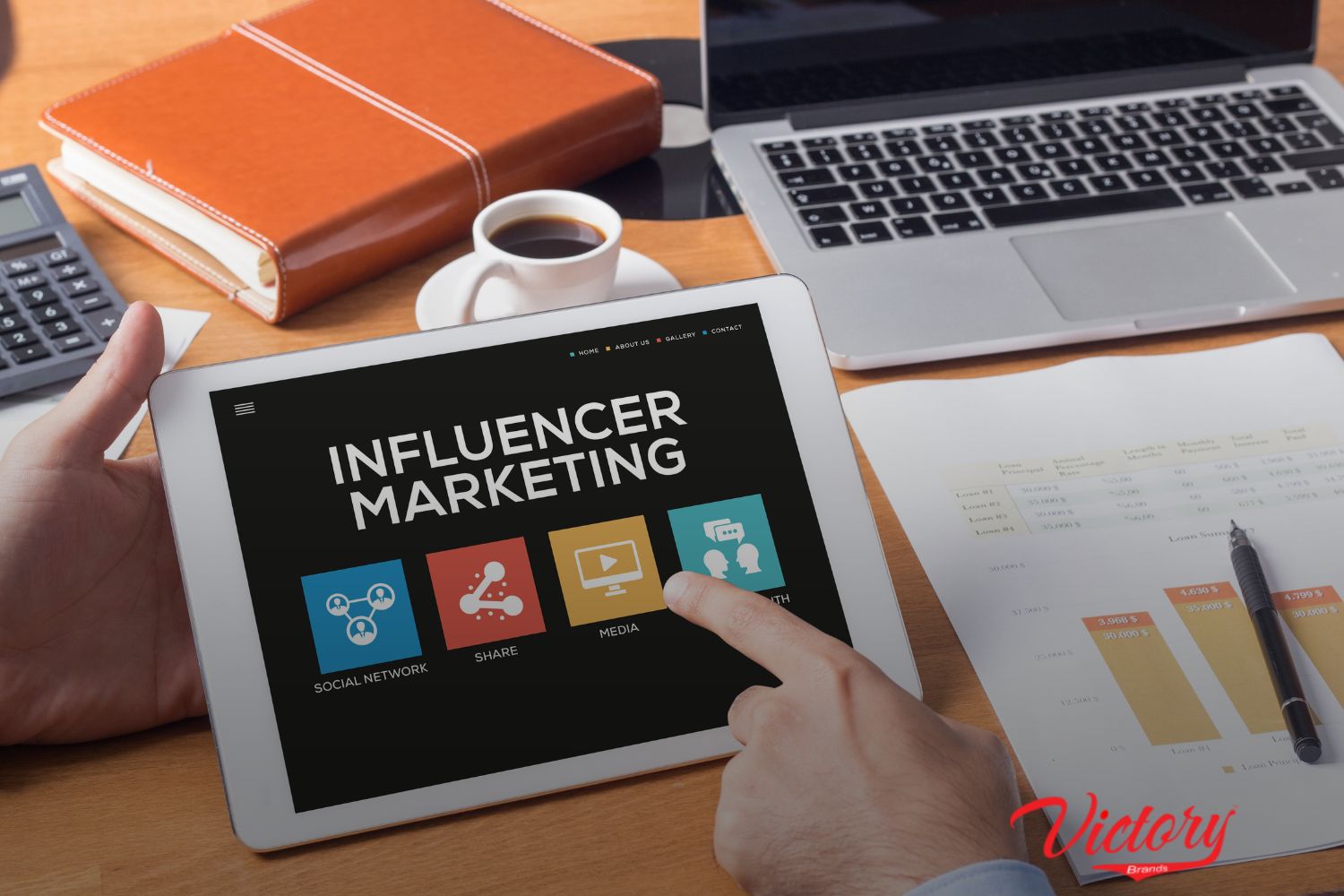Influencer Marketing: Partner with the Right Influencers

Influencer Marketing: Partner with the Right Influencers

Influencer marketing is a powerful strategy for modern brands, offering an authentic way to connect with audiences. Whether you’re a startup or an established business, knowing how to find and partner with the right influencers can amplify your marketing efforts and deliver measurable results.
In this guide, we will explore how to identify the perfect influencers for your brand and build mutually beneficial partnerships that drive engagement, brand awareness, and sales.
Why Influencer Marketing Matters
Influencer marketing is no longer just a trend—it’s an essential component of the digital marketing ecosystem. According to recent reports, 93% of marketers use influencer marketing, and 89% of them say it delivers ROI comparable to or better than other marketing channels.
- Boost brand credibility: Influencers provide genuine endorsements that connect with their followers.
- Increase brand visibility: By leveraging influencers’ large and engaged followings, your brand can reach a wider audience.
- Drive engagement and sales: Well-executed influencer campaigns can convert followers into loyal customers.
Understanding Your Brand’s Goals and Audience
Before diving into influencer marketing, it’s crucial to understand your brand’s objectives. Ask yourself:
- What are your marketing goals? (e.g., increase brand awareness, boost sales, promote a product launch)
- Who is your target audience?
- What platforms are your target customers most active on?
Answering these questions will help you create a focused strategy and identify the right influencers who align with your brand’s voice, values, and audience demographics. Influencer marketing works best when it’s aligned with your overall marketing goals and reaches the right audience.
Finding the Right Influencers
Once you’ve identified your goals and audience, it’s time to find influencers who align with your brand.
1. Define Influencer Types and Categories
- Micro-influencers (10K-100K followers): These influencers have smaller, more niche audiences, but they often boast higher engagement rates. They’re great for building personal, relatable connections with their audience.
- Macro-influencers (100K-1M followers): These influencers have a broad reach and are ideal for campaigns aimed at large-scale awareness.
- Celebrity influencers (1M+ followers): Best for large brands with sizable budgets, celebrity endorsements can instantly put your brand in front of millions of followers.
2. Use Influencer Discovery Tools
- Influence.co and Upfluence: These platforms offer vast databases of influencers across various niches and social media platforms.
- Hashtag searches: Searching relevant hashtags on Instagram, TikTok, or Twitter can lead you to influencers actively discussing your industry or product category.
- Google searches: Search for “top influencers in [your niche]” to discover lists and profiles of notable influencers.
3. Evaluate Influencer Metrics
Once you’ve found potential influencers, consider these metrics to evaluate their effectiveness:
- Engagement rate: Look beyond follower count and assess how actively their audience engages with their content (likes, comments, shares).
- Audience demographics: Ensure the influencer’s followers match your target audience in terms of age, location, and interests.
- Content quality: Check for consistent, high-quality posts that align with your brand image.
Building a Partnership with the Influencer
After identifying potential influencers, the next step is reaching out and building a solid partnership.
1. Start with Personalized Outreach
Influencers are more inclined to partner when they feel appreciated.
Avoid generic pitches and personalize your outreach by:
- Mentioning why you believe they are a good fit for your brand.
- Highlighting specific content of theirs that aligns with your campaign.
- Offering a clear value proposition—whether it’s compensation, product samples, or an exclusive partnership opportunity.
2. Offer Mutually Beneficial Terms
Successful partnerships are built on mutual benefit. Influencers are likely to partner with brands that offer:
- Fair compensation: Depending on the influencer’s size and reach, compensation may range from free products to cash payments or long-term contracts.
- Creative freedom: Trust the influencer’s expertise with their audience. Allow them to craft authentic messages that will resonate with their followers.
3. Create Clear Campaign Guidelines
While creative freedom is essential, it’s equally important to outline clear campaign goals and deliverables.
- The number of posts (e.g., one Instagram story, two feed posts).
- Key messages or hashtags.
- Any brand guidelines (such as tone or product mentions).
Measuring Success and ROI
Once the campaign is live, measuring its effectiveness is crucial. Use tools like Google Analytics, UTM tracking codes, or platform-specific analytics to monitor these metrics and assess the campaign’s success. Key performance indicators (KPIs) will vary based on your goals, but may include:
- Engagement metrics: Likes, shares, comments, and story views.
- Follower growth: Did your brand’s social media following increase after the campaign?
- Conversions: Track any increase in sales or website traffic generated by the influencer’s posts.
- Brand mentions and reach: How often was your brand mentioned across platforms?
Conclusion
When executed correctly, influencer marketing has the potential to transform your brand. Finding the right influencers and creating genuine partnerships helps ensure your message resonates with their audience. Remember, the key to success lies in clear communication, mutually beneficial terms, and a well-defined strategy that aligns with your brand’s goals.
Take time to research your influencers, personalize your approach, and focus on authenticity to create long-lasting, impactful partnerships.
Frequently Asked Questions
Look for influencers whose audience aligns with your target demographics, and whose content matches your brand’s tone and values. Evaluate their engagement rates and authenticity.
The amount depends on the influencer’s following, engagement rate, and the scope of the campaign. Compensation can range from free products to thousands of dollars per post.
Instagram, TikTok, and YouTube are currently the most effective platforms, but it depends on where your target audience is most active.
Track metrics like engagement (likes, comments, shares), follower growth, website traffic, and sales conversions using UTM links or platform analytics.
Yes! Micro-influencers often have highly engaged audiences, making them a great choice for small businesses looking to build authentic connections.
Share:
Categories
- Brand Strategy
- Business Growth
- Business Strategy
- Content Marketing
- Custom Software Development
- Customer Relationship Management
- Digital Advertising
- Digital Marketing for Startups
- Digital Marketing Strategy
- E-Commerce
- Email Marketing
- Future Marketing
- Influencer Marketing
- Lead Generation
- Mobile Optimization
- Pay Per Click (PPC)
- SEO
- Social Media Marketing
- Social Media Marketing
- Social Media Trends
- Software Development
- Startup Strategies
- Technology
- User Experience (UX)
- Venture Development
- Video Marketing
- Web Design
- Website Design
- Website Optimization
Latest Post
- SEO Best Practices for Modern Website DesignIn the competitive digital landscape, a well-designed website is not just about…
- Why Storytelling is Crucial for Effective Brand StrategyIn a world inundated with advertisements and messages, cutting through the noise…
- How to Conduct a Competitive Analysis for Brand Strategy SuccessIn today’s crowded marketplace, distinguishing your brand is essential for success. One…
Other Blogs




